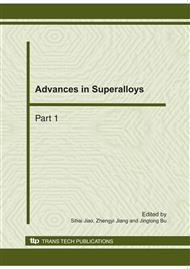p.1671
p.1675
p.1681
p.1685
p.1690
p.1698
p.1702
p.1708
p.1712
Influences of Slag and Fly Ash on the Microstructure Property and Compressive Strength of Concrete
Abstract:
This research aims to investigate the pore structures and the interfacial transition zone (ITZ) of concrete containing both slag and fly ash. Test variables include three water-to-binder ratios (0.35, 0.50, 0.70) and four substitute ratios of cement with pozzolanic materials (20%, 30%, 50% and 60%). The specimens were tested to determine compressive strength, MIP porosity measurement and ITZ microhardness. Test results show that concrete containing slag and fly ash produce evident filling effect and the pozzolanic reaction after 28 days. At the age of 91 days the pozzolanic materials has provided prominent contribution to the strength, the porosity and the ITZ of concrete, making the pore volume smaller and ITZ property of pozzolanic concrete better than that of normal concrete. The concrete that adds suitable amount of pozzolanic materials (ex. 10% slag + 10% fly ash) has the optimum microstructure and mechanical property. Too much pozzolanic materials (ex. 40% slag + 20% fly ash) may be disadvantage to the concrete, and the suggested substitute ratio is under 50%. It is found that the compressive strength has the closest relationship with the total pore volume, so we use the total pore volume to predict the compressive strength of pozzolanic concrete and establish a prediction model as follow: S= -662.68Vt+87.29, R2=0.946.
Info:
Periodical:
Pages:
1690-1697
Citation:
Online since:
October 2010
Authors:
Keywords:
Price:
Сopyright:
© 2011 Trans Tech Publications Ltd. All Rights Reserved
Share:
Citation:


